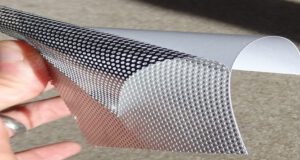Window Film
Using window film to reduce the amount of heat escaping from your home is an effective way to increase the comfort of your home while saving money on your energy bills. Not only does it keep your home warm in the winter, but it also blocks UV rays that can damage your furniture and furnishings. It also acts as a deterrent to vandals, and can increase the security of your home. Using window film can save you money in the long run, and you can see a return on your investment in as little as three years.
Using Window films is a relatively easy process. It’s actually easier to install than it is to replace your windows. The process involves spraying a soap and water mixture onto the window, then applying the film. The film can be installed on just about any surface, including doors. It comes in a variety of thicknesses, and each one has its own strengths and weaknesses. The thinner the film, the faster it will dry.
In addition, window tinting can also help to cut the cost of your energy bills, reduce excessive glare, block out heat and increase privacy. For either the home or office, they offer nationwide coverage and all their window films obstruct harmful UV rays, without compromising on light. With one thin layer of window film you can simultaneously protect your family, save money and improve your safety.

Window film is made of ultra thin layers of polyethylene terephthalate (PET) that are stacked one on top of the other. A single sheet of this film can block nearly 80% of solar energy. Having a window that blocks solar energy helps you save on your energy bill, as you don’t have to use your air conditioner as often.
How Window Film Works
Some of the more advanced films use ceramic particles instead of metal to block UV rays. In the past, window films were merely reflective. Today, however, manufacturers are adding metal particles to the film to give it extra power.
The main drawback to using window film is the amount of time it takes to cure. This may vary from film to film, but generally, it takes several days to dry. During this time, it’s important to remove any mounting solution, and to avoid interfering with the film during this time. Moisture left over from the installation process can create moisture bubbles, and can make the film look cloudy. It’s also a good idea to have a squeegee handy to scrape off air bubbles.
One of the most common reasons homeowners opt for window film is to save on energy costs. This is because window film blocks unwanted heat without sacrificing brightness. In addition, it can help to block UV rays, which can accelerate the aging process of furniture and other household items. In fact, most films block 99% of UV rays. It also reduces fading of curtains, blinds, and other household items.
The best window film for your home is one that is made from high quality materials, is spectrally selective, and has a few other key features. For example, low-e window film has a metal-like appearance, but is also temperature-stabilizing. It also has a sputter-coated inner surface to increase its UV blocking capabilities.
There are many kinds of window films available. These range from clear to coloured. Some also contain a reflective outer coating, which can help to deter vandals.